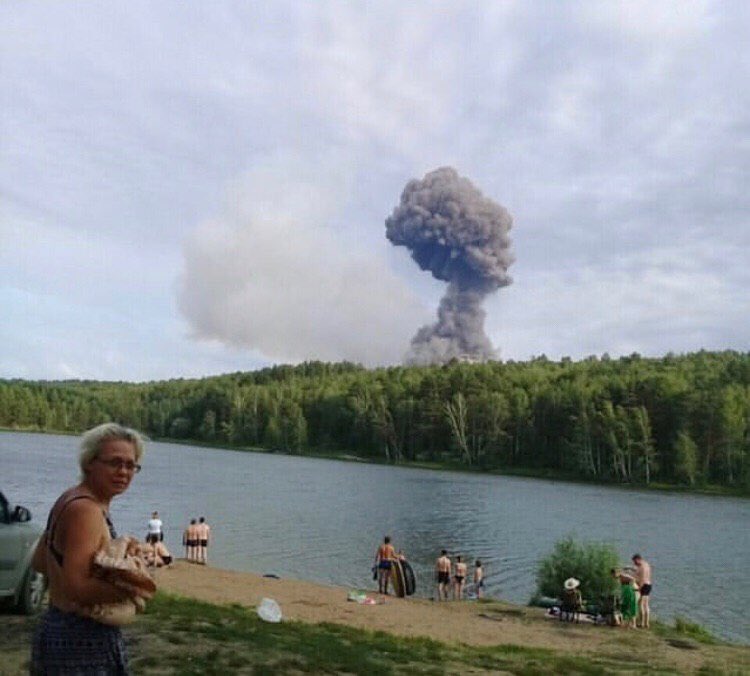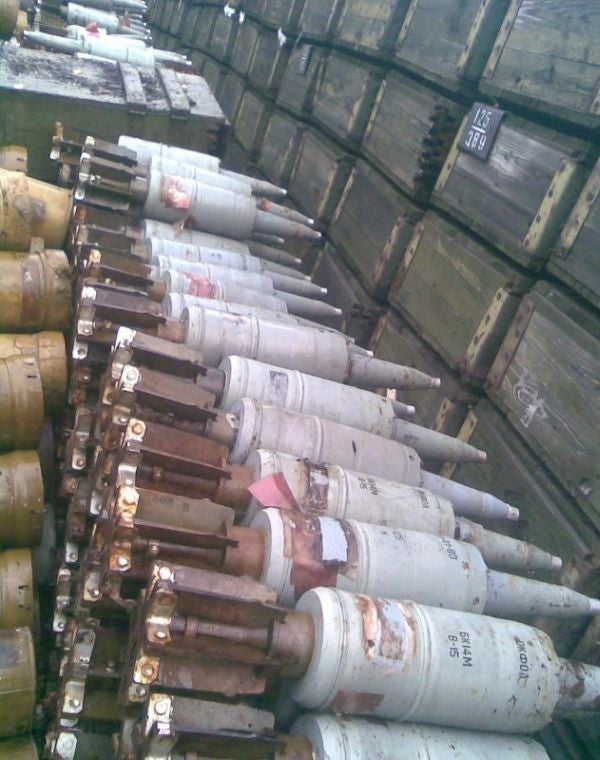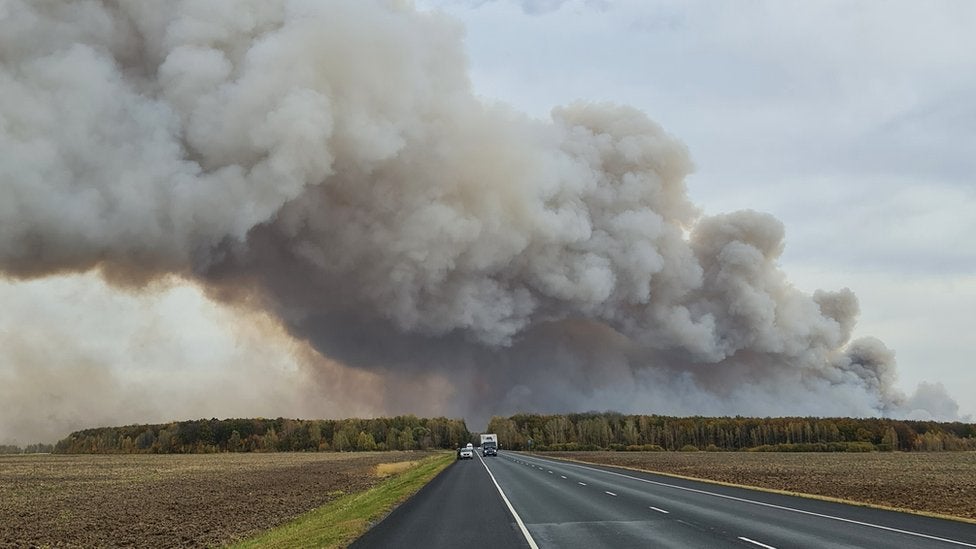Why Do Russian Ammunition Depots Keep Blowing Up?
On Wednesday, 7th October, in the Ryazan Region, Russia, a wildfire caused by dry grass spread vigorously. Flames reached a nearby ammunition depot, of the Armed Forces of the Russian Federation, causing the detonation of 75,000 tonnes of explosive materials, rockets, shells, and fuel. Over 400 firefighters rushed to the scene. 2,300 people had to flee the area due to the danger caused by the explosion. Photographs from the area can be seen here.
In 2017 a similar accident happened in Vinnitsya, Western Ukraine. 200,000 tons of explosives cached fire and blew up, forcing 30,000 people to evacuate from the region. Local authorities decided to close the airspace over the region as the debris from the depot was launched several hundred meters into the air.

In August 2019, the ammunition depot, belonging to Military Unit 74008, in Kamenka, Siberia, blew up due to a fire started in one of the base’s warehouses. 11,000 people had to be evacuated. The Russian military resorted to using unmanned mine disposal vehicles to ‘tidy up’ the base.
The violent destruction of various ammunition storages sites and depots in Russian and former-Soviet Union countries appear to be occurring annually, with thousands tonnes of materials detonated. The collateral damage caused to the surroundings and the environment by the incidents is often significant. But what is the cause of these accidents? What are the reasons behind them? Let’s look into some of them.
Poor Safety Standards
Countries formed from former-Soviet regions and republics, such as Ukraine, Belarus, Kazakhstan, etc., tend to be much less developed than their richer neighbors to the West. Safety conditions are of secondary importance, as military budgets are often spent on modernization, salaries, or even defrauded by administration workers. There are reportedly also no procedures on proper and safe ammunition storages and no funds for military courses for the base personnel. Legal frameworks are also non-existent in this matter, as maintaining safety is basically too expensive. Thus, it would be unreasonable to create additional mandatory regulations and fulfilling those standards.

The situation of shells and rockets being literally dumped on the ground in damaged containers is a typical occurrence. Many of the ammunition depots are being secured only by barbed-wire fences and undermanned guard crews. This often results in high levels of fire threat, which is one of the main causes of ammunition stores being blown up.
Mandatory Service
The obligatory service for adults in post-Soviet countries is totally different than voluntary service in the US. Many soldiers are forced into service which usually lasts for 2 years. During this time, recruits are equipped with old, Soviet-era equipment and begin basic training, usually lasting a couple of months. After this period, they have to continue their service, often far from home in poor sanitary conditions. Many of non-professional soldiers are malnourished or used as a cheap labor force by different governmental institutions. Additionally, fresh draftees are put under immense psychological pressure by older draftees and forced to participate in informal ceremonies during which they suffer physical punishments as a form of initiation to the armed forces. This occurrence was commonly known within the Polish People’s Armed Forces of the Soviet-era as “the wave”. Many of young draftees committed suicide due to the exploitation by older colleagues and members of the higher ranks.
Soldiers who are demotivated by their own service in tragic conditions would usually not care about maintaining safety, as they are very often tired and unsatisfied. There are also masses of badly educated people pressed into service, who very often have difficulties with technical aspects of their work.
As the majority of the Former-Soviet armies base their armed forces on obligatory service of conscripts, situations in which the soldiers do not maintain safety procedures are very common. Personnel often lacks basic knowledge of armament handling procedures, which very often leads to catastrophes caused by soldiers’ negligence.
Old Ammunition Stockpiles

The Russian ammunition reserves are indeed huge, as the USSR’s Cold War armament production put a lot of focus on the factories’ outputs. This resulted in both: huge amounts of ammunition produced and the low quality of it. However, the number of shells is still so great, that it is somewhat cost-ineffective for the Russian Armed Forces to design and produce new caliber weapons.
One of the issues following this condition is the problem of very old ammunition, sitting in the warehouses for decades without any inspection. Fuzes tend to rust and break, metal shells corrode, and containers decay. It is highly possible, that under such conditions ammunition detonates sporadically.
Organized Crime

The collapse of the Soviet Union in the early 1990s proved a lucrative time for many arms dealers and criminal organizations. The USSR ceased to exist with millions of people living below the poverty line and many nations within its borders, fighting for independence. Badly paid soldiers often resorted to theft of weapons and ammunition in order to help their families or simply earn a living. This led to infringements within the Russian Armed Forces when highly ranked officers driven by the possibility to earn huge amounts of foreign currencies decided to sell the national property to various groups. The peak of such behavior was during the First Chechen War (1994-1996), where Russian soldiers often sold ammunition and explosives to Chechen nationalists and fundamental Islamists. Supposedly, even private soldiers scooped TNT out of reactive tank armor and sold it on the black market.
However, even now organized crime is present within the post-Soviet states. A lot of military magazines were pillaged in Ukraine in 2014, as the war in the Donbas region broke out. And how to cover up a theft of huge stockpiles of weapons? Destruction of the site in a fire might be one answer.
Conclusion
The significant number of destroyed Russian ammunition depots is likely high to the reasons we’ve explored earlier. Poor safety measures, untrained conscripts, and stockpiles of old, unreliable munitions with the addition of occasional thefts lead to the conclusion that it is a simply endemic problem. Whenever a cigarette is dropped somewhere near a warehouse or simply grass is burned by farmers, there is a huge possibility that it could lead to catastrophe.
The lack of legal framework and protection standards, that are mandatory within the armed forces of more developed countries, leads to a significant loss of war material and casualties and in numerous cases forcing civilians to flee their homes. Additionally, the cost tied to the clean up of destroyed sites is often huge.
The situation is not likely to change any time soon. Without radical actions to improve safety, there is no other possibility for the Russian Armed Forces, and other Former Soviet armies, to enforce it by themselves. The centralization of the command structure and dependence on the Ministry of Defense will paralyze any push for reforms coming from soldiers being constantly put in danger by working in the ammunition depots. This is the sad reality of many of the post-Soviet militaries.

